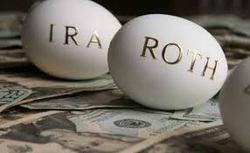
Because of the different purposes of the 5-year rules, effective techniques for managing and planning around them are different as well.
In the case of the 5-year rule on Roth contributions, the easiest way to manage the rule is simply to start the clock as early as possible, since any first amounts placed into a Roth IRA start the clock. For many, they have already started (or entirely satisfied) their 5-year requirement with prior Roth contributions.
For those who have never chosen to make a Roth contribution - or perhaps couldn't, due to the income limitations - an alternative is to do a conversion from a traditional IRA to start the clock; even just a modest $100 conversion is enough to open the time window. For those who have no IRA funds to convert, they can even create an IRA just for the purposes of doing a conversion, as there are no income limits on traditional IRA contributions (the income limits only determine whether the contribution will be deductible or not). However, those looking to do a (nondeductible) traditional IRA contribution and subsequent Roth conversion may wish to wait a year to avoid the risk of the step transaction doctrine.
In addition, it's notable that because distributions are deemed to come from principal first and earnings second, even withdrawals from a Roth contribution within the 5-year time window will not necessarily trigger any income taxation, unless the total distributions exceed all prior contributions.
However, it's also important to bear in mind that even if the withdrawal is principal and not subject to ordinary income taxation, if it is a conversion amount within the 5-year time window, the withdrawal may be subject to early withdrawal penalties even if it is not otherwise taxable. On the other hand, as noted earlier, if the individual is otherwise exempt from the early withdrawal penalty (e.g., by being over age 59 1/2), the withdrawal of conversion principal is penalty-free (over 59 1/2) and tax-free (as it was already taxed at conversion). Thus, for those who are already over age 59 1/2 (or totally disabled), the Roth conversion 5-year rule is essentially a moot point, and only the 5-year rule for contributions remains relevant.
Another notable situation where the rules may overlap is after the death of a Roth IRA owner. As death is an exception to the early withdrawal penalty, any beneficiaries taking distributions from a Roth IRA will always enjoy penalty-free treatment (regardless of whether it's principal or earnings, and regardless of whether the 5-year rule for conversions has been met or not). On the other hand, death does not eliminate the 5-year contribution rule for earnings to be tax-free! Thus, beneficiaries taking withdrawals from a recently opened Roth IRA (if there were no other Roth accounts to start the 5-year clock) may find that the earnings are still taxable until the 5-year time window has passed from when the original Roth owner established the account; on the other hand, because of the favorable ordering rules, beneficiaries taking RMDs will be tapping tax-free and penalty-free principal anyway, so this issue would generally only apply if the beneficiaries were liquidating most/all of the Roth IRA shortly after inheriting it (and before the original 5-year contribution time window had been satisfied).
Separate Roth Contribution and Roth Conversion Accounts?
For convenience purposes, because the Roth rules aggregate together all Roth accounts under IRC Section 408A(d)(4)(A), there is no need to keep Roth contributions and conversions in separate accounts, or to otherwise try to separate out multiple types of contributions. The aforementioned ordering rules (principal first, then conversions on a FIFO basis, then earnings) apply in the aggregate across all accounts. So at the most, accounts should only be kept separate if it is necessary/helpful for tracking and accounting (though notably, conversions should be kept separate if there is an expectation they might be recharacterized and there is a desire to just recharacterize the specific gains/losses and assets associated with that particular conversion).
The Bottom Line
It's important to remember that there are two separate 5-year rules, each with their own requirements and stipulations. The Roth conversion 5-year rule is about accessing penalty free conversion principal (and is irrelevant if the individual already meets one of the other exceptions to the early withdrawal penalty), while the Roth contribution 5-year rule is about accessing tax-free Roth earnings (which are assumed to be extracted last, anyway).

 RSS Feed
RSS Feed
